Hamilton Ventura Elvis80 Automatic
A modern evolution of the iconic style made famous by the King of Rock and Roll: Elvis Presley.
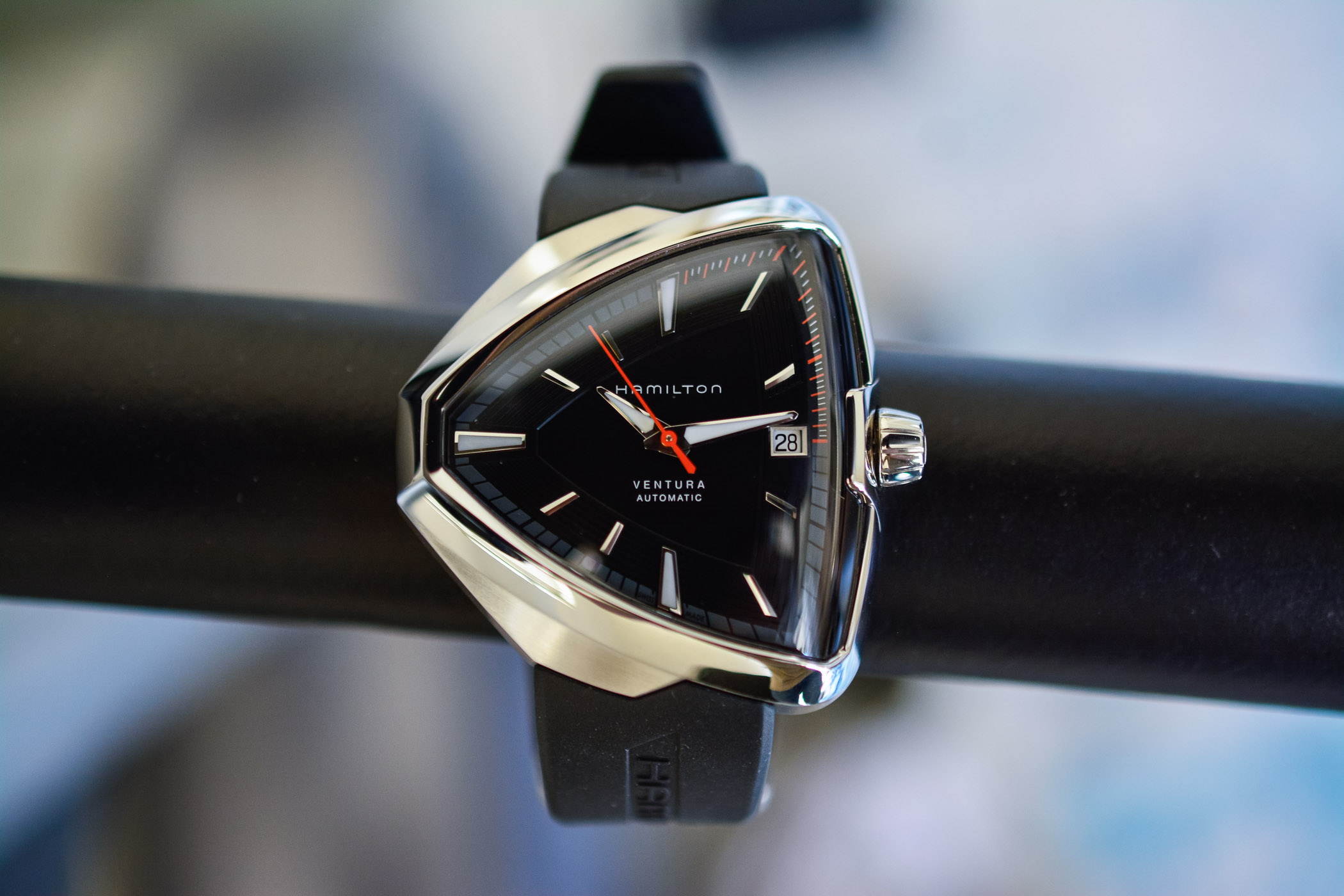
Back in the 1950s, all consumer watches were mechanical, either hand-wound or automatic. The initial storm of the quartz crisis was still a couple of decades off and either design or mechanical prowess helped set brands apart. One major horological disruption occurred in 1957 in the form of an electronically controlled, battery-powered wristwatch. Packaged in a futuristic design, the Hamilton Ventura became an icon four years later when Elvis Presley wore it in the 1961 movie, Blue Hawaii. The latest Hamilton Ventura Elvis80 pays tribute to the King of Rock and Roll and what would’ve been his 80th birthday with a larger, contemporary twist on a true classic.
Background
Hamilton was still an American watchmaker in 1957, again producing consumer timepieces after focusing solely on military watches during World War II. The Ventura was a radical development both aesthetically and mechanically, being the first electric “hybrid” in the industry. Despite its battery-powered movement, it wasn’t quartz – that was over a decade away with Seiko’s 1969 Astron. In layman’s terms, Ventura’s electric calibre 500 had an “electronic mainspring” powering a conventional balance wheel, fueled by a miniature battery developed in partnership with the National Carbon Company. Problems, unfortunately, persisted as the movements were temperamental and prone to corrosion with few watchmakers willing to attempt repairs. Compounding this was the release of Bulova’s Accutron in 1960, a fully electronic movement with a 360Hz tuning fork replacing the balance wheel. Reliable and accurate to one minute per month, the Accutron was the precursor to modern quartz movements and pushed Hamilton’s effort into obsolescence.
Icons aren’t always born from successful engineering, however, and the Ventura’s triangular, asymmetrical case was a big part of its success. Designed by Richard Arbib, notable for his work at General Motors, the aesthetic had design elements from both automotive tail fins of the day and the burgeoning atomic age. It gained cult status following its stint on Elvis Presley’s wrist in his eighth and most successful movie, Blue Hawaii.
Original production stopped after seven years, but its popularity never really waned. The Ventura made a huge comeback in 1988 and found new cult status following significant exposure in the Men in Black trilogy. That late 1980s model was similar in design to the original (now with a quartz movement), but the series has since grown into a diverse collection with chronographs and automatics.
Case and design
The classic 1980s triangular design is somewhat small by today’s standards with a 32.3mm width and 50.3mm height. The narrow width is what makes it feel small, but the Elvis80 Automatic expands to a width of 44.6mm (42.5mm in height), satisfying contemporary demand. The proportions are certainly different, wider instead of taller, but the triangular aesthetic is still unmistakably Ventura. The classic also has stylized “shields” over the lugs, acting almost like guards for the strap. The Elvis80 Automatic eschews a conventional strap (or steel bracelet) for a unique “puzzle piece” connection to the case that drops the extending shields.
The middle case section extends beyond the bezel in a way that’s reminiscent of the original look, but it’s subtle. The left side of the case is brushed and angular with flat surfaces and hard edges, while the right side is the polar opposite – polished and rounded. It’s an interesting mix that somehow works. If it wasn’t a little weird, it wouldn’t be a Ventura after all. The sapphire exhibition caseback is curved to conform to the wrist, while the front sapphire crystal slopes downward on the right side like a recent Samsung Galaxy phone display. It all culminates into a funky, eccentric design and perfect evolution of the original Ventura concept. The case is 316L stainless steel with a black PVD option and water-resistant to 50 metres.
Dial and hands
The matte black dial is almost as interesting as the case with multiple levels and textures. The triangular centre portion has a smooth finish, surrounded by a ridged chapter ring with applied indices of varying sizes and angles. An outermost grey minutes track has a detailed 15-minute scale in orange, matching the orange seconds hand. The polished silver hour and minute hands have Super-LumiNova inserts along with the indices at 12, 6 and 9 o’clock. A date window tastefully sits at 3 o’clock.
Due to the dial’s asymmetrical shape, the hands are a bit scattershot as they rotate. For example, the seconds hand sweeps over the outer track at 7 and 11 o’clock but is far from it at 5 and 9 o’clock. All hands are very legible against the black dial, however, and it’s never a challenge to quickly read the time at a glance. Reflections on the crystal are a bit more prevalent than I’d like, but the stark black background is largely to blame – white or partially skeletonized dials are also available.
Movement
One of the real highlights of the original Ventura was the electronic movement and corresponding electric/atomic wavy line on the dial. The watch was both substance and style. The classic quartz model maintains that electric vibe both inside and out, but the Elvis80 uses Hamilton’s latest H-10 automatic, based on the ETA C07.111. It’s (almost) the same movement used in the new Jazzmaster Skeleton we recently reviewed and it’s quite an impressive engine – the Jazzmaster drops the date.
It has 25 jewels, beats at 21,600vph (3Hz) with an 80-hour power reserve. Functions include central hours, minutes, seconds and date at 3 o’clock. The view through the exhibition caseback is interesting as a round movement sits within the triangular case with empty space surrounding it. Unusual to say the least. The vacant area is black with a silver “V” pattern, contrasting well against the predominantly silver movement. The H-10 is decorated with perlage and a customized, openworked rotor.
Strap
The strap on my piece is black rubber with a stainless steel pin buckle, but a steel bracelet is also an option along with white rubber or black calf leather (depending on the model). The lug width is either 21mm or 22mm, but the ends are unique to the case and can’t be replaced with third party options. As mentioned earlier, they fit like a puzzle piece. The rubber strap is comfortable out of the box and fit my relatively small wrist well, which is somewhat rare for a large case (many come with comically large straps). The curvature of the caseback also adds to the comfortable fit.
Conclusion
I’m a big fan of the original Ventura and its innovative (yet flawed) electronic movement. The classic 1980’s model replicates that dynamic well, but the Ventura Elvis80 Automatic pushes the design in a new and interesting direction. The edgy triangular shape is still instantly recognizable and the size increase is appropriate for modern consumers. The Ventura collection is now expansive and diverse, and no longer simply represents a ‘Jetsons’ kind of future. As we at MONOCHROME focus on all things mechanical (with a few exceptions), it’s great to see the Ventura line embracing automatic calibres. If you insist on old-school electricity, however, the Elvis80 comes with an optional quartz movement as well.
The Ventura Elvis80 Automatic with rubber strap retails for CHF 1,395 or USD 1,445. Not bad for such a unique piece with a storied history going back to the King of Rock and Roll. For more information and orders, check the page here at www.hamiltonwatch.com.


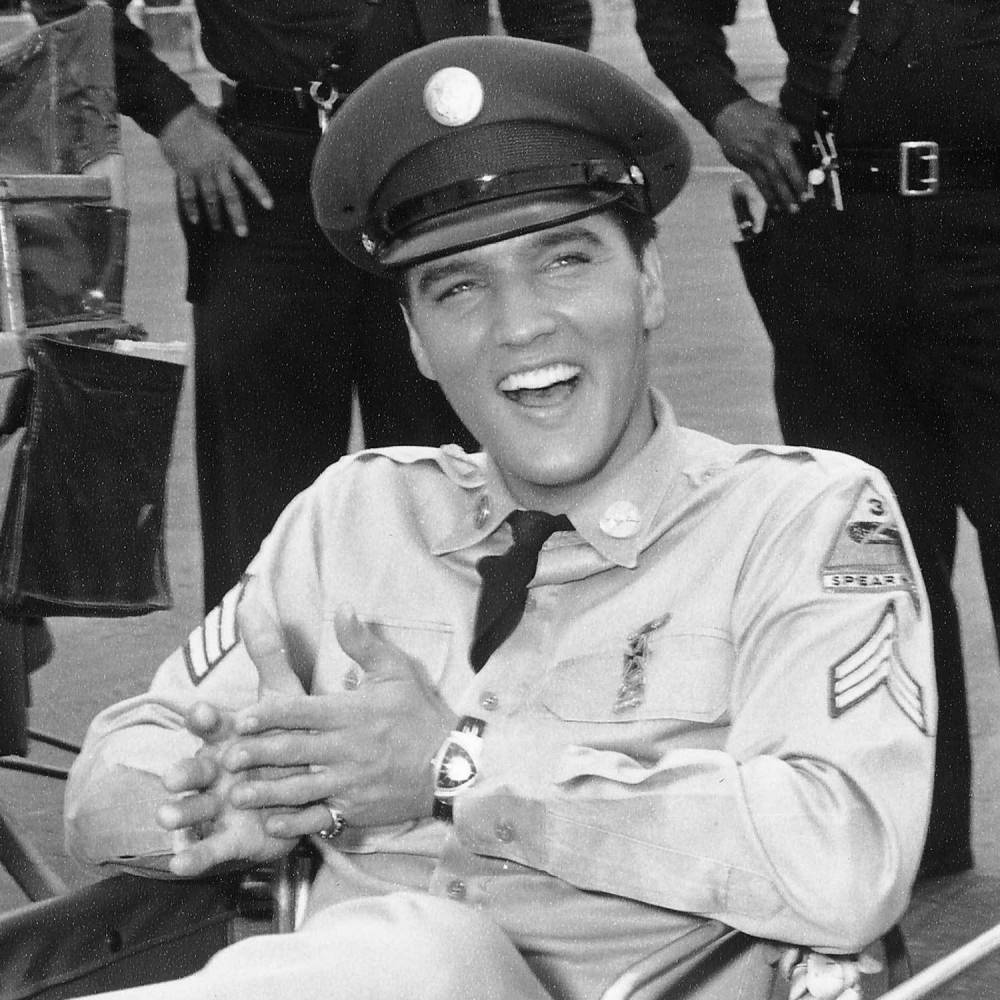

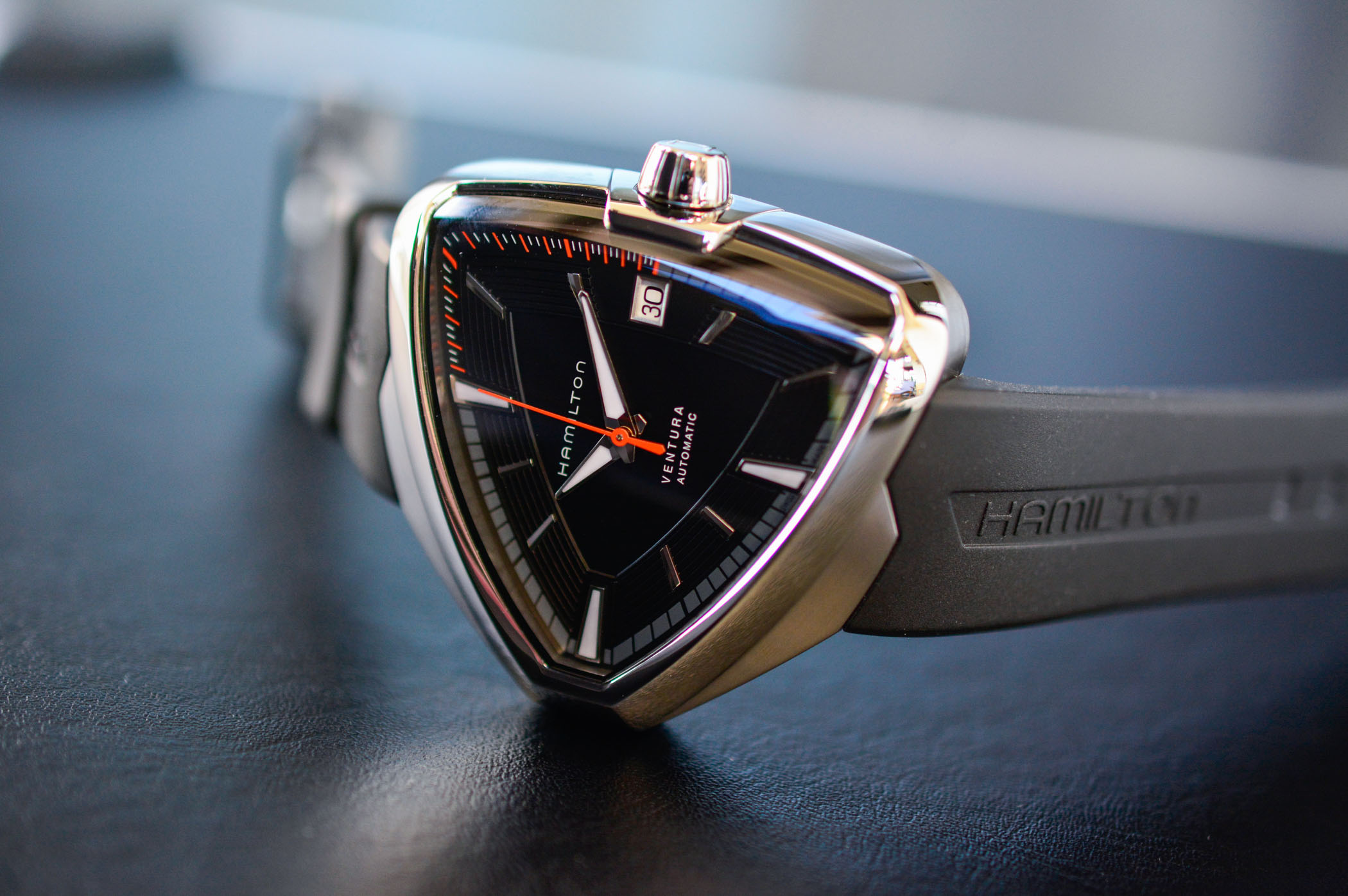
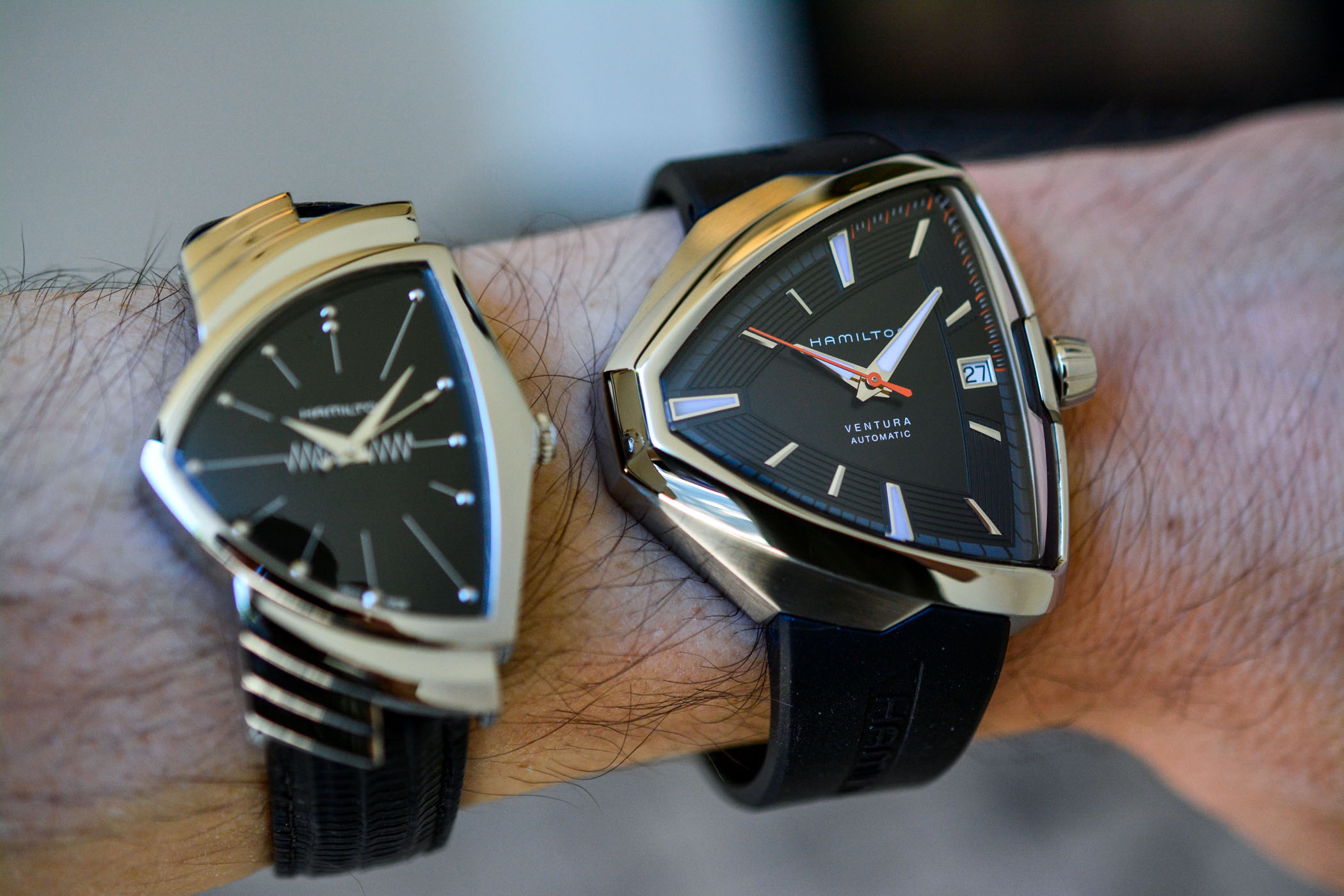

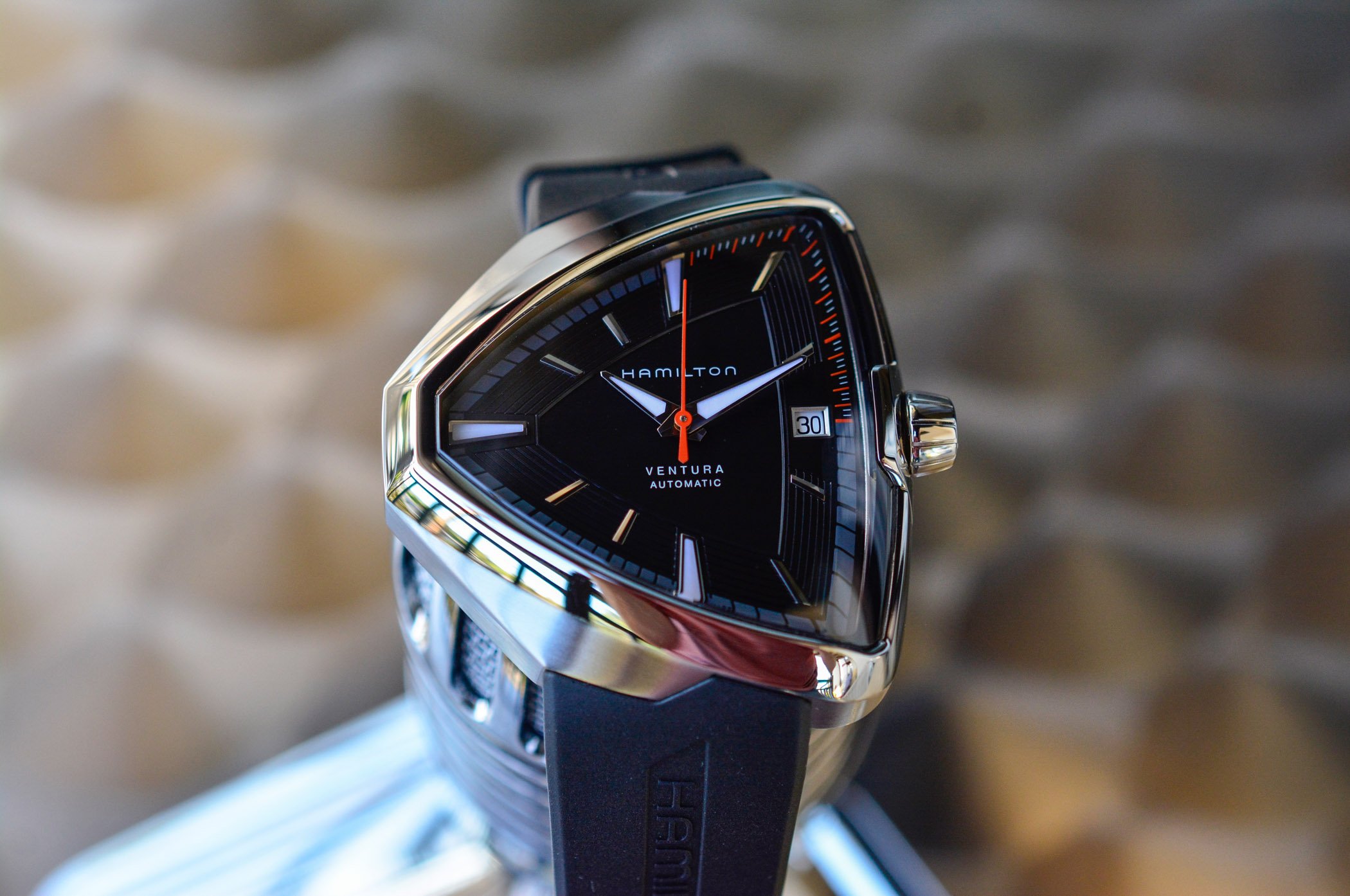
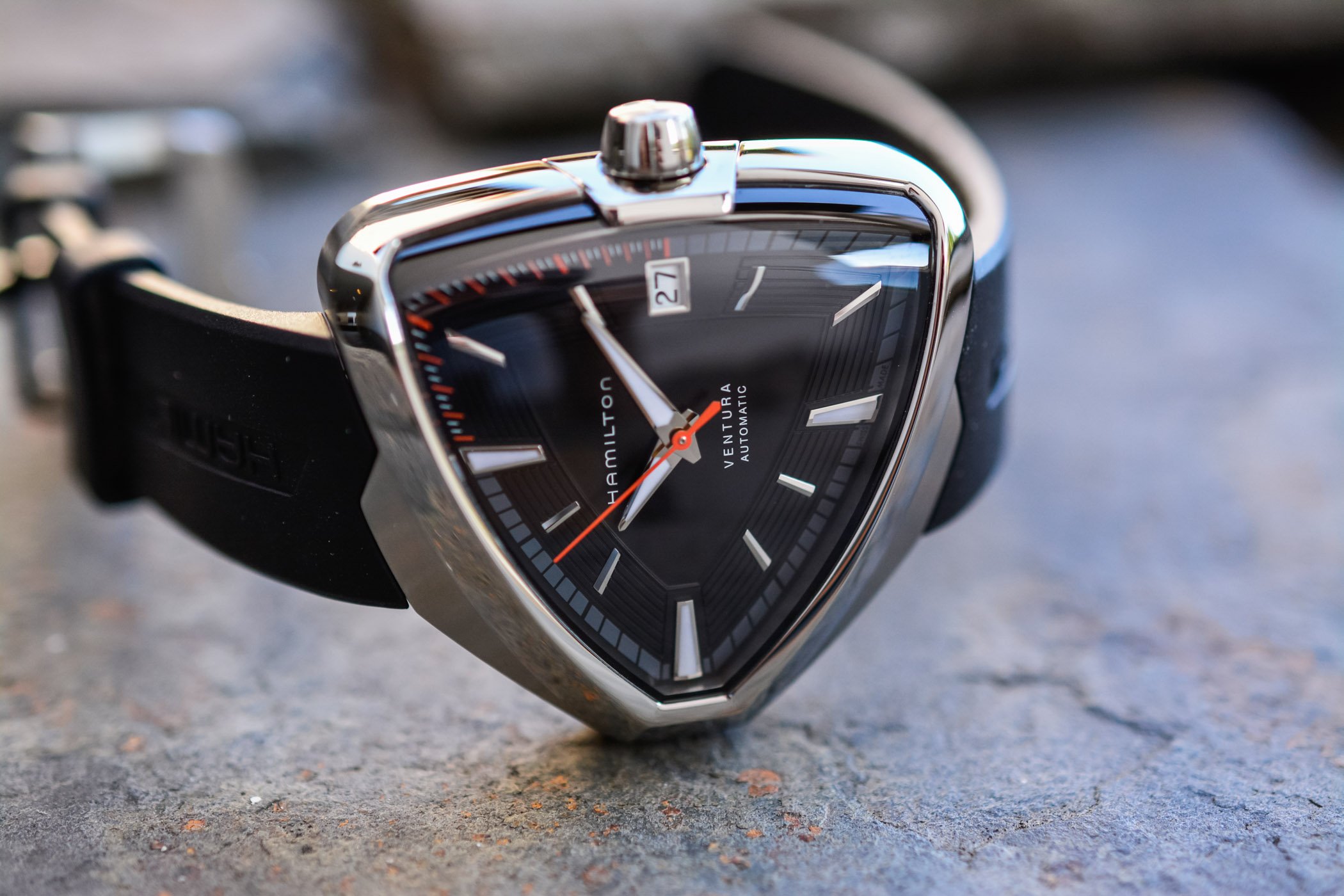
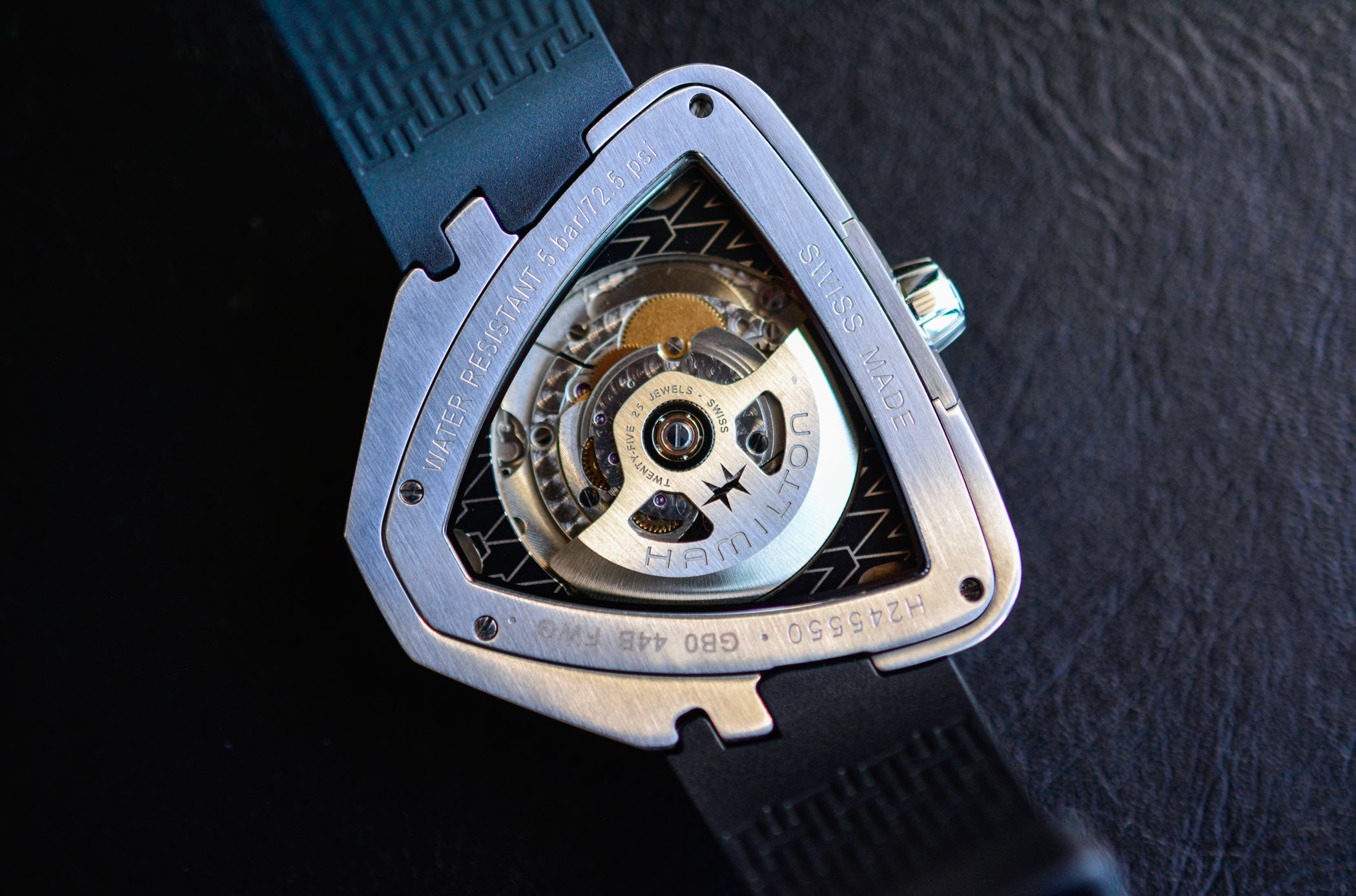
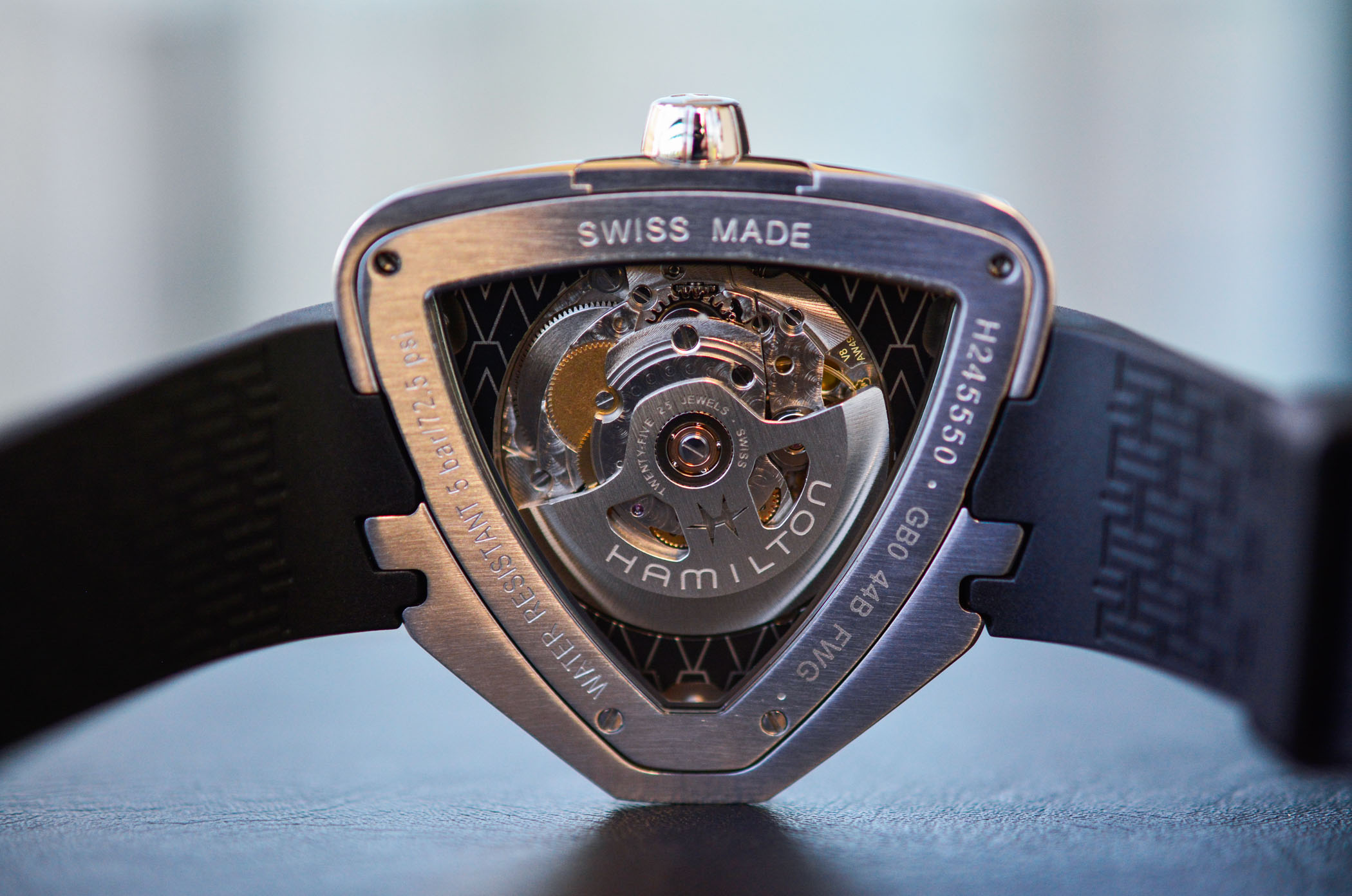
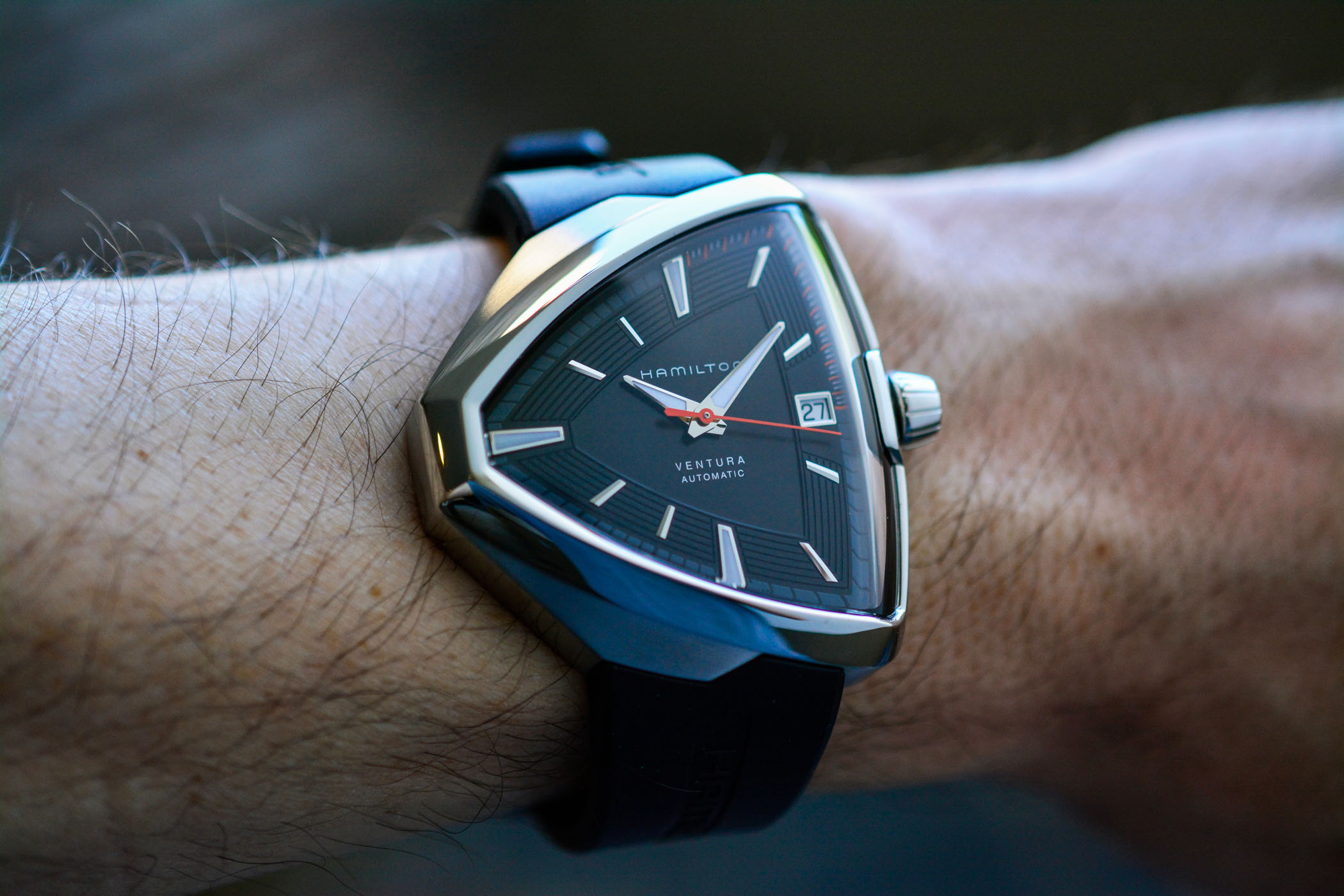



2 responses
That would be a watch, after a car accident…
If it had Hublot or Richard Mille on the dial and was 10 x the price it would sell a lot.